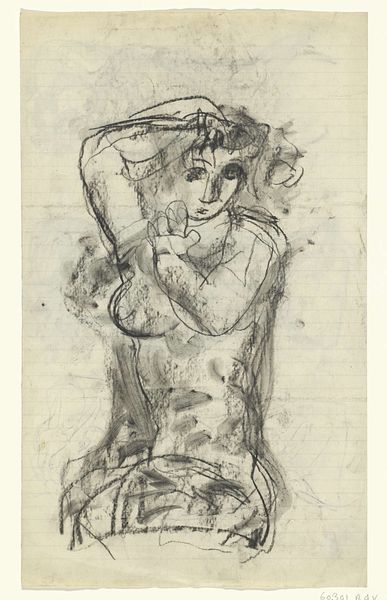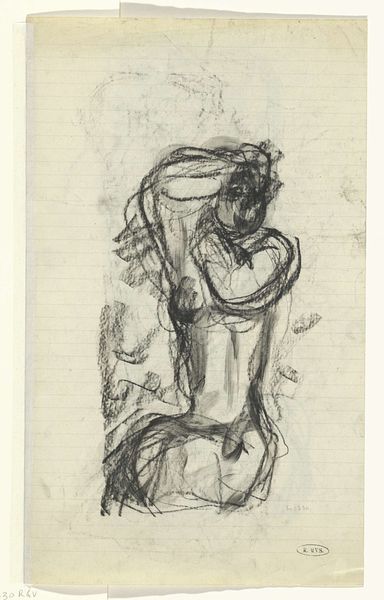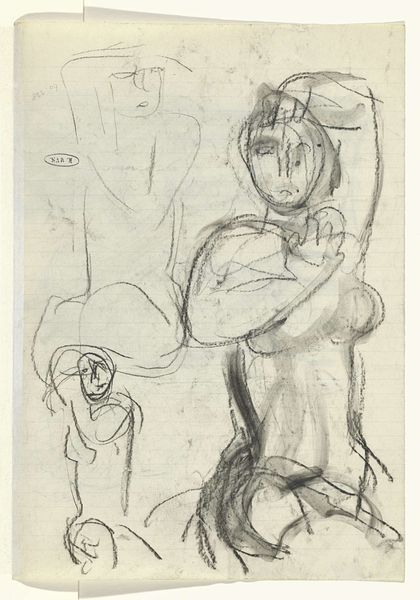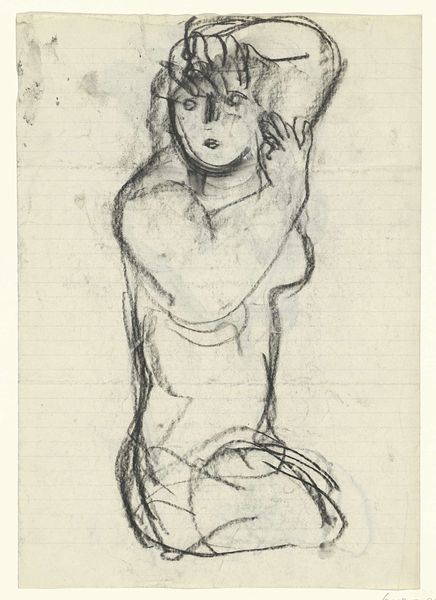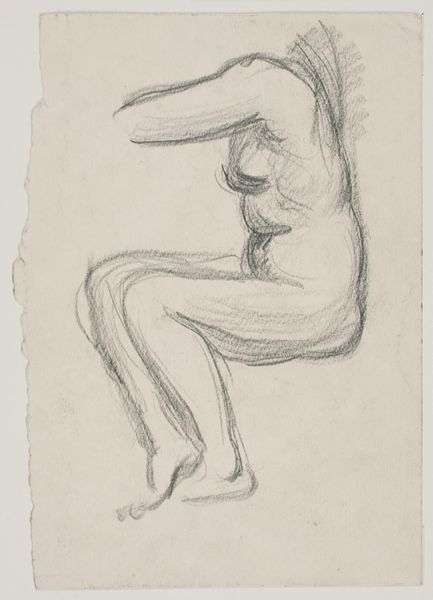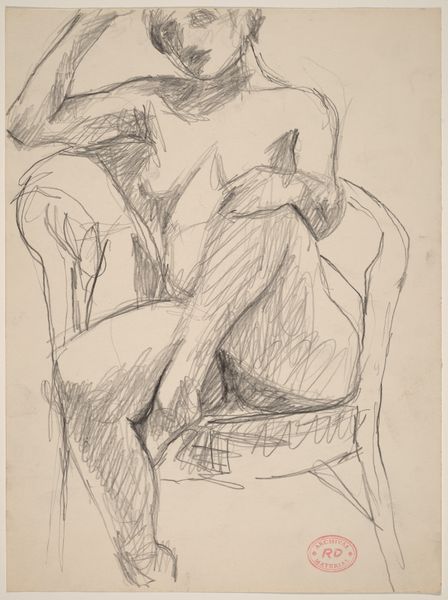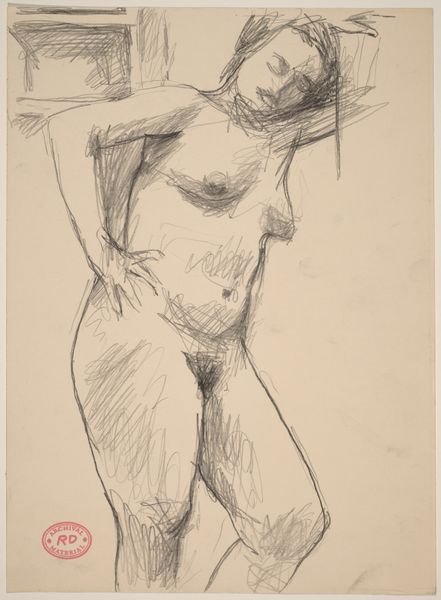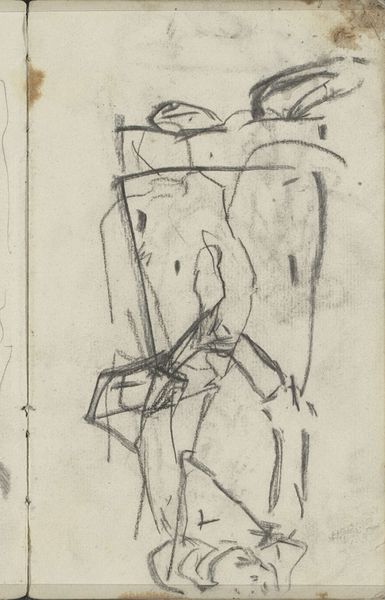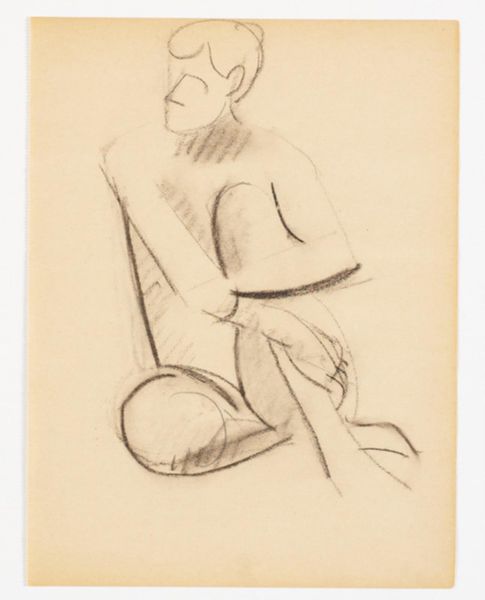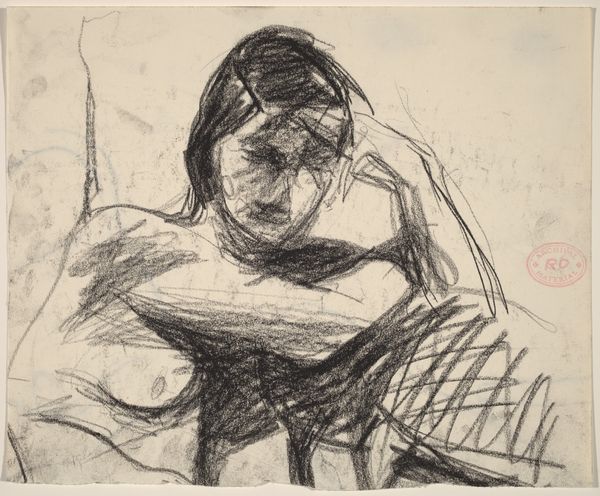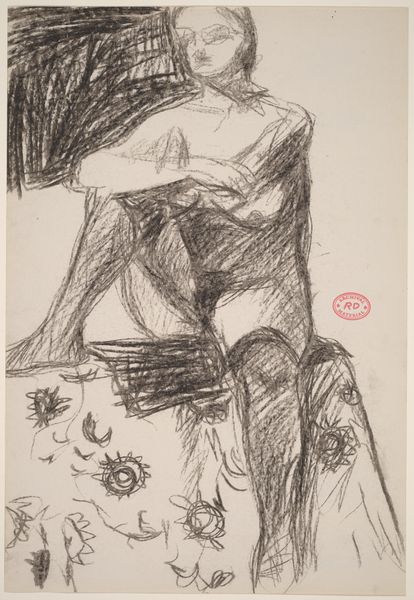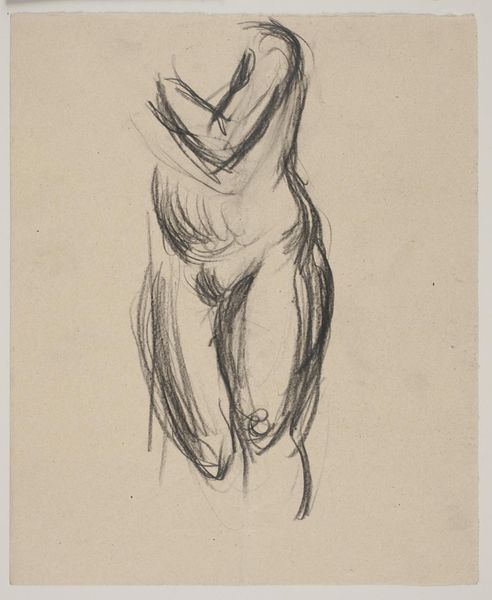
drawing, pencil
#
drawing
#
amateur sketch
#
light pencil work
#
pen sketch
#
pencil sketch
#
figuration
#
personal sketchbook
#
ink drawing experimentation
#
pen-ink sketch
#
pencil
#
expressionism
#
sketchbook drawing
#
nude
#
sketchbook art
#
initial sketch
Dimensions: height 329 mm, width 198 mm
Copyright: Rijks Museum: Open Domain
Curator: Before us is "Geknielde naakte vrouw met haar handen in het haar," a drawing by Leo Gestel created sometime between 1891 and 1941. It's rendered in pencil, and it currently resides here at the Rijksmuseum. Editor: My first thought is that this piece resonates with a very raw, unfiltered emotion. The starkness of the pencil strokes and the almost frantic depiction of the figure suggests distress or anguish. Curator: That rawness is characteristic of expressionism, a movement Gestel associated with. The historical context of this piece places it between two World Wars, a period marked by widespread anxiety and upheaval which finds its reflection in art, often visualized through distorted figures and intense emotional displays. Editor: The woman's posture, kneeling with her head in her hands, speaks volumes. It is a classic symbol of grief, despair, or even shame found throughout art history. The lines almost feel like a cage, suggesting an inner struggle, and one can interpret it as the emotional weight women often carry. It makes me wonder what specific societal or personal pressures are manifested here. Curator: Indeed, the political climate undoubtedly influenced artistic expression. But consider too the societal expectations imposed on women. The nude form, traditionally a celebration of the idealized female body, becomes here a vulnerable figure, stripped bare not just physically but emotionally as well. Gestel questions this visual vocabulary. Editor: I find it so compelling how such simple lines can convey such complexity. It is not just a woman; it's a representation of psychological turmoil. I almost see it as a contemporary echo of the ancient Greek depictions of mourning figures, albeit translated through the lens of 20th-century anxieties. The act of touching one's head becomes an universal indicator of internal distress. Curator: Gestel uses this very universal pose to tap into a wider collective consciousness about the silent suffering of that era. It's a fascinating and important commentary that asks the public to reflect on the burdens they themselves might also carry, unspoken. Editor: Precisely. It reveals art’s function in translating the ephemeral state of being, beyond historical contexts, enabling a continuous conversation around internal conflict. Curator: This piece showcases art as a reflection of societal wounds, both visible and invisible. Gestel challenges us to confront difficult emotions, transforming what might seem like a simple sketch into a profound social statement.
Comments
No comments
Be the first to comment and join the conversation on the ultimate creative platform.
